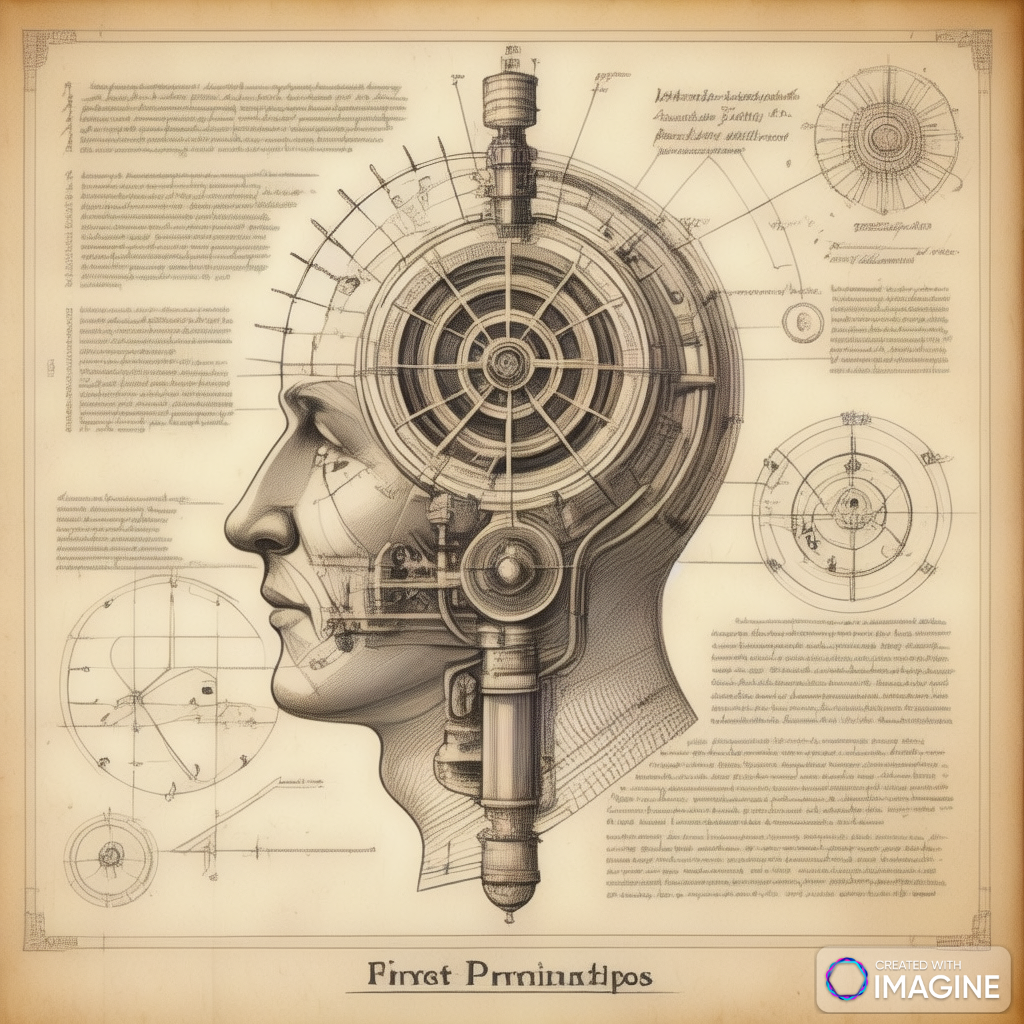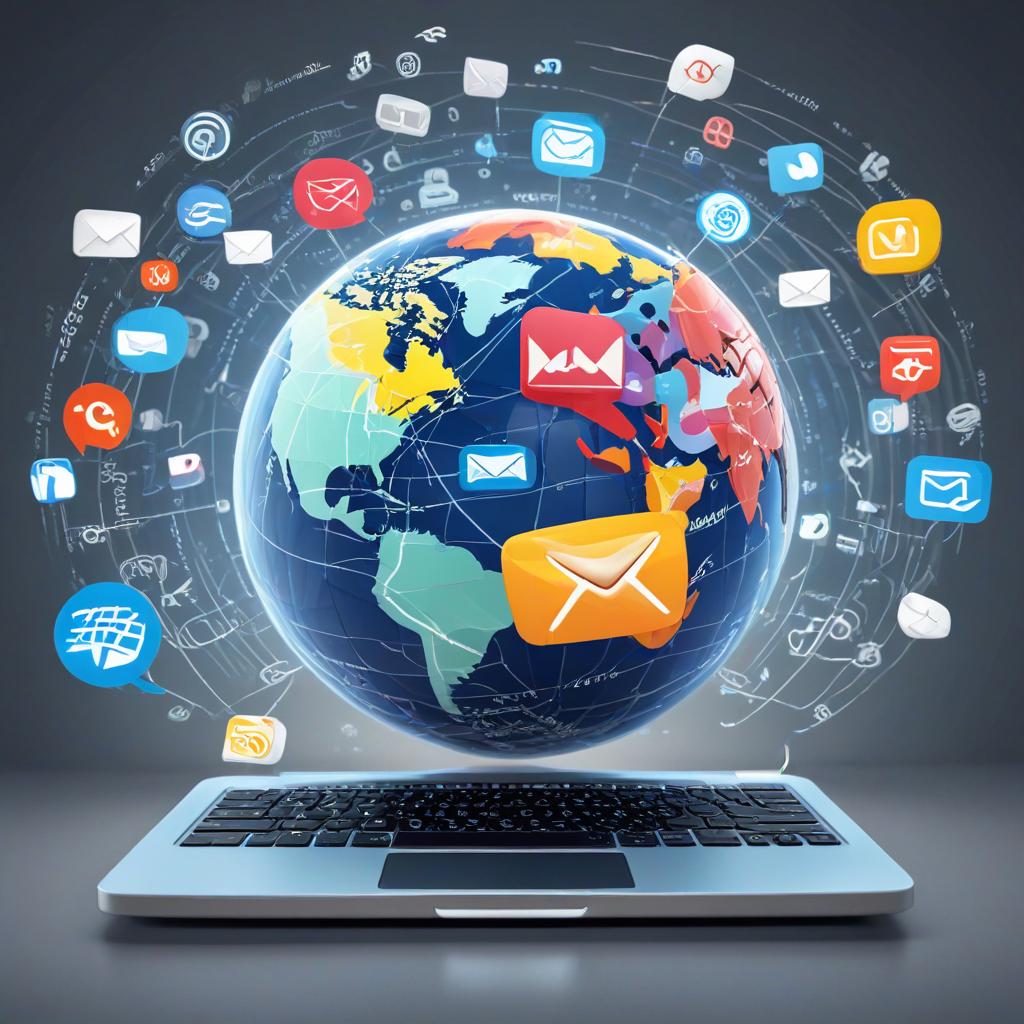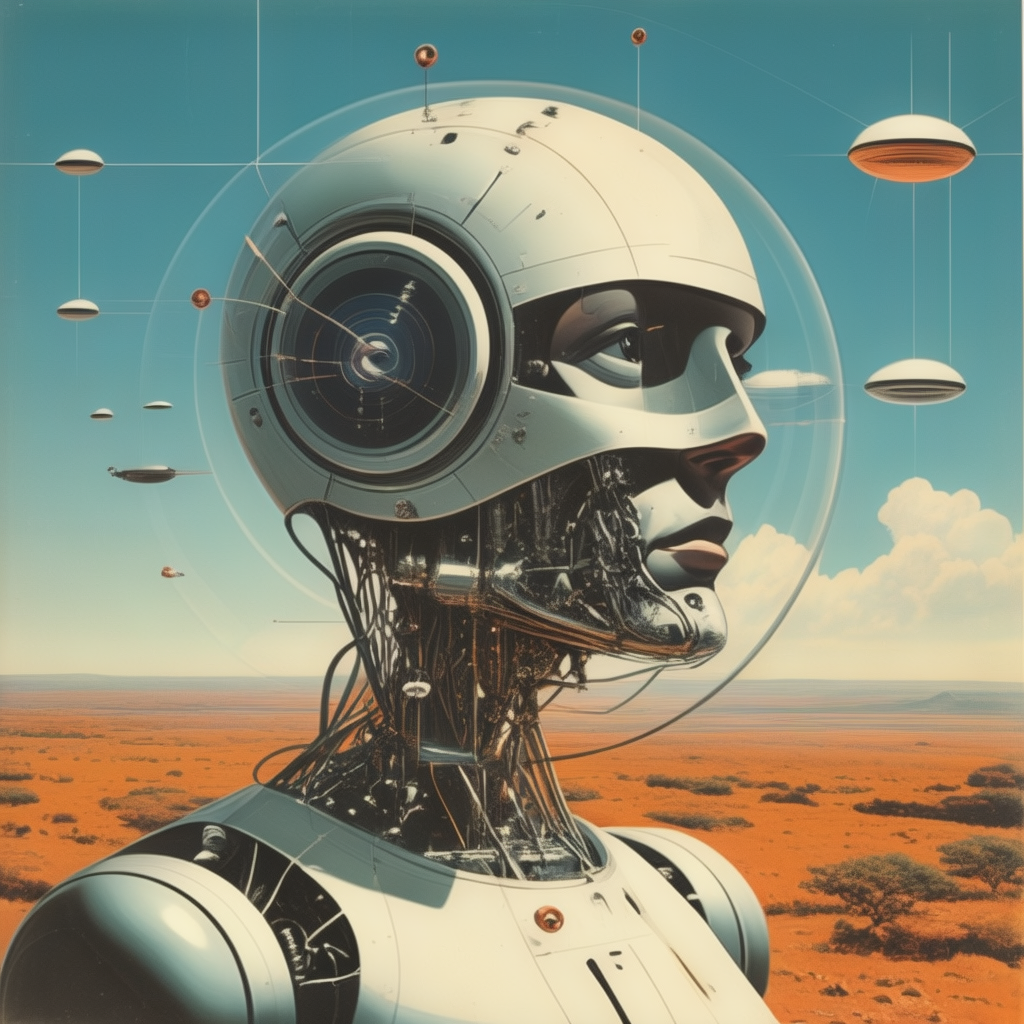Introduction: In the realm of futurism and technological speculation, few concepts capture the imagination as profoundly as the Singularity. Coined by mathematician John von Neumann and popularized by futurist Ray Kurzweil, the Singularity represents a moment of profound transformation, where human intelligence merges with artificial intelligence, leading to an unprecedented era of technological advancement. In this blog post, we delve into the intricacies of the Singularity, exploring its origins, scientific underpinnings, and potential implications for humanity’s future.
Origins of the Singularity: The concept of the Singularity traces its roots to the mid-20th century, with John von Neumann’s exploration of self-replicating machines and exponential growth in technological capabilities. However, it was Ray Kurzweil who brought the idea to the forefront of public discourse with his seminal book “The Singularity is Near,” published in 2005. Kurzweil envisioned a future where accelerating technological progress would lead to a point of profound convergence, blurring the lines between human and machine intelligence.
Understanding the Singularity: At its core, the Singularity represents a hypothetical point in time when artificial intelligence surpasses human intelligence, leading to an exponential growth in technological capabilities. This moment is envisioned as a paradigm shift, where traditional notions of progress and human limitations are fundamentally altered. The driving force behind the Singularity is the concept of exponential growth, where technological advancements build upon themselves at an accelerating rate, leading to rapid and transformative change.
Scientific Research and Technological Development: The scientific research underlying the Singularity encompasses various fields, including artificial intelligence, robotics, nanotechnology, and biotechnology. Advances in these areas contribute to the development of increasingly intelligent and capable machines, paving the way for the realization of Kurzweil’s vision. Machine learning algorithms, neural networks, and quantum computing are among the key technologies driving progress towards the Singularity.
Applications of the Singularity: The implications of the Singularity are vast and far-reaching, with potential applications across virtually every aspect of human society. From healthcare and education to transportation and entertainment, the integration of advanced technologies promises to revolutionize how we live, work, and interact with the world around us. Enhanced cognitive abilities, personalized medicine, and autonomous systems are just a few examples of the transformative possibilities unleashed by the Singularity.
Challenges and Considerations: While the prospect of the Singularity holds immense promise, it also raises profound ethical, social, and existential questions. Concerns about job displacement, inequality, and the loss of human autonomy underscore the need for careful consideration and responsible stewardship of technological progress. Additionally, ethical frameworks and regulatory mechanisms must be established to ensure that the benefits of the Singularity are equitably distributed and aligned with human values.
Looking Ahead: As we stand on the cusp of a new era in human history, the concept of the Singularity forces us to confront fundamental questions about the nature of intelligence, consciousness, and our place in the universe. While the path to the Singularity is fraught with uncertainty and complexity, it offers a glimpse into a future where the boundaries between humanity and technology blur, opening up infinite possibilities for innovation and exploration.
- Evolution of Computing Power:
- The historical progression of computing power is a fascinating journey that spans centuries and has seen remarkable advancements in technology. It’s a story of human ingenuity, innovation, and relentless pursuit of faster and more efficient ways to process information. Let’s delve into the evolution of computing power, from its humble beginnings to the cutting-edge technologies of today:
- Early Mechanical Calculators:
- The journey of computing power traces back to ancient times when humans devised mechanical devices to aid in mathematical calculations.
- One of the earliest examples is the abacus, which dates back to ancient Mesopotamia and China. It enabled users to perform basic arithmetic operations through the manipulation of beads on rods.
- In the 17th century, mathematicians like Blaise Pascal and Gottfried Wilhelm Leibniz invented mechanical calculators capable of performing addition, subtraction, multiplication, and division.
- These early mechanical devices laid the foundation for the development of more sophisticated computing machines in the centuries to come.
- The Advent of Electronic Computers:
- The true revolution in computing began in the mid-20th century with the advent of electronic computers.
- In 1941, Konrad Zuse built the Z3, the world’s first programmable digital computer. It utilized electromechanical relays to perform calculations and was a significant step forward in computing technology.
- The ENIAC (Electronic Numerical Integrator and Computer), completed in 1945, was the first general-purpose electronic digital computer. It was massive in size and used vacuum tubes to perform calculations, paving the way for electronic computing.
- The subsequent development of transistors in the late 1940s and integrated circuits in the 1950s led to smaller, faster, and more reliable computers, marking a significant milestone in the evolution of computing power.
- Rise of Microprocessors and Personal Computers:
- The invention of the microprocessor in the early 1970s by companies like Intel and Texas Instruments revolutionized computing by enabling the integration of entire CPU functionality onto a single chip.
- The introduction of the microprocessor paved the way for the rise of personal computers (PCs) in the 1980s and 1990s. Companies like IBM, Apple, and Microsoft played pivotal roles in popularizing PCs and making computing power accessible to the masses.
- Moore’s Law, formulated by Intel co-founder Gordon Moore in 1965, predicted that the number of transistors on a microchip would double approximately every two years, leading to exponential growth in computing power and performance.
- Supercomputers and Parallel Processing:
- Supercomputers emerged in the 1960s and 1970s as specialized systems designed to tackle complex scientific and engineering calculations.
- Cray Research, founded by Seymour Cray, was a pioneering company in the development of supercomputers. Their machines, such as the Cray-1, were known for their exceptional processing speed and parallel processing capabilities.
- Parallel processing, which involves breaking down computational tasks into smaller sub-tasks that can be executed simultaneously across multiple processors, became a key feature of supercomputing architectures, enabling unprecedented levels of computational power.
- Quantum Computing:
- Quantum computing represents the next frontier in computing power, leveraging the principles of quantum mechanics to perform calculations at speeds that are orders of magnitude faster than classical computers.
- Quantum bits, or qubits, the fundamental units of quantum information, can exist in multiple states simultaneously, allowing quantum computers to explore vast solution spaces and solve complex problems more efficiently.
- Companies like IBM, Google, and D-Wave are at the forefront of quantum computing research and development, working towards realizing the potential of quantum computers to revolutionize fields such as cryptography, optimization, and materials science.
- In summary, the historical progression of computing power is a testament to human innovation and technological advancement. From the early mechanical calculators to the latest quantum computers, each milestone has pushed the boundaries of what is possible in computing, shaping the way we work, communicate, and explore the world around us.
- Advancements in hardware technology, particularly the development of integrated circuits and the principles outlined in Moore’s Law, have played a pivotal role in driving exponential growth in computational capabilities. Let’s explore how these advancements have shaped the landscape of computing:
- Integrated Circuits (ICs):
- Integrated circuits, also known as microchips or chips, revolutionized the field of electronics by miniaturizing electronic components and enabling their integration onto a single semiconductor substrate.
- Prior to the invention of integrated circuits in the late 1950s, electronic devices relied on discrete components such as transistors, resistors, and capacitors, which were bulky, prone to failure, and limited in functionality.
- The invention of the integrated circuit by Jack Kilby at Texas Instruments and Robert Noyce at Fairchild Semiconductor marked a paradigm shift in electronics, allowing for the fabrication of complex electronic circuits with unprecedented levels of miniaturization and reliability.
- Integrated circuits paved the way for the development of microprocessors, memory chips, and other essential components of modern computing systems, laying the foundation for the exponential growth of computational capabilities.
- Moore’s Law:
- Moore’s Law, formulated by Intel co-founder Gordon Moore in 1965, observed that the number of transistors on a microchip was doubling approximately every two years, leading to a corresponding increase in computational power and performance.
- This empirical observation, initially based on the trend of increasing transistor densities in integrated circuits, became a guiding principle for the semiconductor industry and a driving force behind the rapid pace of technological advancement.
- Moore’s Law spurred relentless innovation in semiconductor manufacturing processes, leading to the development of ever-smaller transistors and more densely packed integrated circuits.
- The continuous scaling of transistor sizes and improvements in semiconductor fabrication techniques enabled the production of microchips with higher transistor counts, faster switching speeds, and lower power consumption, fueling the exponential growth of computational capabilities.
- Exponential Growth in Computational Power:
- The combination of integrated circuits and Moore’s Law has led to exponential growth in computational power over the past several decades.
- As transistor densities increased and chip sizes shrank, the computing industry witnessed a steady increase in the performance of microprocessors, memory modules, and other hardware components.
- This exponential growth in computational power has enabled the development of faster, more efficient computers, capable of handling increasingly complex tasks in areas such as scientific computing, data analysis, artificial intelligence, and more.
- The proliferation of high-performance computing systems, including supercomputers, cloud servers, and mobile devices, has democratized access to computational resources and fueled innovation across various industries.
- In summary, advancements in hardware technology, particularly integrated circuits and Moore’s Law, have been instrumental in driving exponential growth in computational capabilities. These advancements have not only transformed the computing landscape but have also catalyzed innovation, economic growth, and societal progress on a global scale.
- Parallel processing, distributed computing, and cloud computing are key technologies that have significantly expanded computational capacity and scalability, revolutionizing the way tasks are executed and resources are managed in computing environments. Let’s delve into the significance of each of these technologies:
- Parallel Processing:
- Parallel processing involves the simultaneous execution of multiple tasks or instructions across multiple processing units, enabling faster computation and improved efficiency.
- By dividing computational tasks into smaller subtasks that can be processed concurrently, parallel processing harnesses the power of multiple processors or cores to accelerate computation.
- Parallel processing is particularly advantageous for computationally intensive tasks such as scientific simulations, data analysis, and image processing, where the workload can be easily divided into independent units of work.
- This technology has led to significant improvements in computational performance, allowing for faster execution times, increased throughput, and the ability to tackle larger and more complex problems that would be infeasible to solve using sequential processing alone.
- Distributed Computing:
- Distributed computing involves the coordination and collaboration of multiple interconnected computers or nodes to work together towards a common goal, typically by sharing resources and distributing tasks across the network.
- Unlike parallel processing, which typically involves multiple processors within a single machine, distributed computing spans across multiple machines or nodes connected over a network.
- Distributed computing enables scalability and fault tolerance by distributing workloads across a network of interconnected nodes, allowing tasks to be processed in parallel and ensuring that system resources are utilized efficiently.
- This approach is essential for handling large-scale data processing, web services, and applications that require high availability, scalability, and resilience to failures.
- Distributed computing frameworks such as Apache Hadoop, Apache Spark, and Kubernetes have emerged as powerful tools for building scalable and fault-tolerant distributed systems, enabling organizations to process vast amounts of data and run complex applications across distributed environments.
- Cloud Computing:
- Cloud computing extends the principles of distributed computing by providing on-demand access to computing resources, including servers, storage, networking, and services, over the internet.
- Cloud computing platforms, such as Amazon Web Services (AWS), Microsoft Azure, and Google Cloud Platform (GCP), offer scalable and flexible infrastructure that can be provisioned and managed dynamically to meet varying workload demands.
- By abstracting underlying hardware and infrastructure complexities, cloud computing enables organizations to focus on developing and deploying applications without the burden of managing physical hardware.
- Cloud computing offers benefits such as cost-efficiency, scalability, elasticity, and global reach, making it an ideal platform for hosting web applications, running big data analytics, deploying machine learning models, and more.
- Moreover, cloud computing facilitates collaboration, enables rapid prototyping, and accelerates time-to-market for new products and services by providing developers with access to a rich ecosystem of tools, services, and resources.
- In summary, parallel processing, distributed computing, and cloud computing are integral to expanding computational capacity and scalability. These technologies enable organizations to harness the power of multiple computing resources, distribute workloads efficiently, and dynamically scale resources to meet changing demands, thereby driving innovation, agility, and efficiency in modern computing environments.
- Breakthroughs in Artificial Intelligence:
- Artificial Intelligence (AI) research has witnessed significant milestones over the years, with breakthroughs in symbolic AI, machine learning (ML), and deep learning (DL) shaping the landscape of intelligent systems. Let’s delve into each of these areas and explore their connection to the concept of singularity:
- Symbolic AI:
- Symbolic AI, also known as classical AI, emerged in the 1950s and focused on rule-based systems and logical reasoning to simulate human intelligence.
- Early AI systems, such as expert systems and knowledge-based systems, relied on explicit programming of rules and logic to solve specific problems.
- The development of symbolic AI laid the groundwork for understanding complex problem-solving and reasoning, paving the way for later AI advancements.
- Machine Learning (ML):
- Machine learning represents a paradigm shift in AI research, wherein algorithms are designed to learn patterns and make predictions from data without explicit programming.
- Key milestones in ML include the development of neural networks, decision tree algorithms, and statistical methods for pattern recognition.
- ML algorithms enable computers to learn from large datasets, adapt to new information, and improve performance over time through experience.
- Deep Learning (DL):
- Deep learning is a subset of ML that utilizes neural networks with multiple layers to learn hierarchical representations of data.
- DL algorithms, particularly convolutional neural networks (CNNs) and recurrent neural networks (RNNs), have achieved remarkable success in various tasks, including image recognition, natural language processing, and speech recognition.
- Breakthroughs in DL, such as AlphaGo’s victory over human champions in the game of Go, demonstrate the power of deep neural networks in solving complex problems.
- Singularity and AI:
- The concept of singularity, popularized by futurist Ray Kurzweil, refers to a hypothetical point in the future when AI surpasses human intelligence, leading to unprecedented technological advancements.
- Symbolic AI, ML, and DL are integral components in the development of AI systems that could potentially lead to singularity.
- Singularity proponents argue that exponential growth in computational power, combined with advancements in AI algorithms and hardware, will eventually enable AI systems to achieve superintelligence.
- However, the idea of singularity is a subject of debate among researchers, with concerns raised about ethical, societal, and existential implications of creating superintelligent AI.
- In summary, key milestones in AI research, including symbolic AI, machine learning, and deep learning, contribute to the ongoing exploration of the concept of singularity, where AI could potentially surpass human intelligence and redefine the future of civilization.
- Seminal achievements in artificial intelligence (AI), such as the development of neural networks, reinforcement learning algorithms, and natural language processing (NLP) models, have significantly advanced the field and contributed to the ongoing discourse on the concept of singularity:
- Relation to Singularity:
- The advancements in neural networks, reinforcement learning, and NLP models represent significant strides towards building artificial general intelligence (AGI), a form of AI that can perform any intellectual task that a human can.
- Singularity proponents argue that continued progress in AI, fueled by exponential growth in computational power and data availability, could eventually lead to the emergence of AGI.
- The idea of singularity posits that once AGI surpasses human intelligence, it could rapidly improve itself, leading to an intelligence explosion and fundamentally transforming society, economy, and the human condition.
- Convergence of Technologies:
- The intersection of artificial intelligence (AI), biotechnology, nanotechnology, and robotics (collectively referred to as NBIR) is driving synergistic innovation by leveraging the unique strengths of each field to address complex challenges and unlock new possibilities:
- Artificial Intelligence (AI):
- AI encompasses a range of technologies that enable machines to perform tasks that typically require human intelligence, such as learning, reasoning, and problem-solving.
- In the context of NBIR, AI serves as a powerful tool for analyzing vast amounts of biological and nanoscale data, identifying patterns, and extracting meaningful insights.
- Machine learning algorithms, in particular, enable predictive modeling, personalized medicine, and drug discovery by analyzing genetic data, biomolecular interactions, and clinical outcomes.
- Biotechnology:
- Biotechnology involves the manipulation of biological systems and organisms to develop products and technologies that improve human health, agriculture, and the environment.
- At the intersection with AI, biotechnology benefits from advanced computational methods for genomic sequencing, protein folding prediction, and drug design.
- AI-driven platforms enable the rapid screening of compounds, the identification of potential drug targets, and the optimization of therapeutic interventions, leading to accelerated drug development pipelines and personalized treatments.
- Nanotechnology:
- Nanotechnology deals with materials, devices, and systems at the nanoscale, typically ranging from 1 to 100 nanometers in size.
- By integrating AI techniques with nanotechnology, researchers can design and fabricate nanomaterials with tailored properties for applications in medicine, electronics, energy, and environmental remediation.
- AI-driven simulations and modeling facilitate the optimization of nanomaterial properties, such as conductivity, catalytic activity, and biocompatibility, leading to the development of novel nanomedicines, nanoelectronics, and nanosensors.
- Robotics:
- Robotics involves the design, construction, and operation of machines that can perform tasks autonomously or semi-autonomously.
- In the context of NBIR, robotics plays a crucial role in enabling precise manipulation and control at the micro and nanoscale, facilitating tasks such as surgical procedures, drug delivery, and nanofabrication.
- AI-powered robotic systems enhance efficiency, accuracy, and adaptability in diverse applications, including medical robotics for minimally invasive surgery, laboratory automation for high-throughput screening, and manufacturing of nanoscale devices.
- Synergistic Innovation:
- The integration of AI, biotechnology, nanotechnology, and robotics enables synergistic innovation by combining computational intelligence with biological and nanoscale systems.
- Cross-disciplinary collaborations foster creative solutions to complex challenges, such as personalized medicine, regenerative therapies, environmental monitoring, and sustainable energy production.
- By harnessing the complementary strengths of NBIR fields, researchers can accelerate scientific discovery, enhance technological capabilities, and address pressing global issues, ultimately driving positive societal impact and economic growth.
- In summary, the intersection of artificial intelligence, biotechnology, nanotechnology, and robotics represents a fertile ground for synergistic innovation, where interdisciplinary approaches and advanced technologies converge to tackle multifaceted problems and unlock new opportunities for progress and advancement.
- Emerging fields such as bioinformatics, nanorobotics, and cybernetics represent exciting frontiers where advancements in multiple disciplines converge to create transformative technologies:
- Bioinformatics:
- Bioinformatics involves the application of computational methods and techniques to analyze, interpret, and model biological data.
- By integrating principles from computer science, statistics, mathematics, and biology, bioinformatics enables researchers to unravel complex biological processes, understand genetic variation, and predict protein structures and functions.
- Advanced algorithms and software tools facilitate genomic sequencing, comparative genomics, transcriptomics, proteomics, and metabolomics, leading to insights into disease mechanisms, drug discovery, and personalized medicine.
- Bioinformatics plays a crucial role in deciphering the genetic basis of diseases, identifying potential drug targets, optimizing treatment regimens, and exploring the interplay between genes, environment, and health.
- Nanorobotics:
- Nanorobotics involves the design, fabrication, and control of nanoscale robots or nanobots capable of performing tasks at the molecular or cellular level.
- Drawing from principles of nanotechnology, robotics, and materials science, nanorobotics aims to develop miniature machines with precise movement, manipulation, and sensing capabilities.
- Nanorobots hold promise for applications in medicine, such as targeted drug delivery, cancer therapy, tissue engineering, and diagnostics.
- By harnessing nanorobots, researchers seek to overcome biological barriers, navigate complex environments, and deliver therapeutic agents with unprecedented precision and efficiency.
- Cybernetics:
- Cybernetics is the interdisciplinary study of control and communication in living organisms and machines, exploring how systems regulate themselves and interact with their environments.
- Integrating concepts from biology, engineering, mathematics, and computer science, cybernetics seeks to understand feedback mechanisms, self-regulation, and emergent behavior in complex systems.
- Cybernetic principles underpin the design of intelligent systems, autonomous agents, and adaptive technologies capable of learning, adapting, and evolving in response to changing conditions.
- Applications of cybernetics range from robotics and artificial intelligence to cognitive science, human-machine interaction, and organizational management.
- Convergence of Multiple Disciplines:
- Bioinformatics, nanorobotics, and cybernetics exemplify the convergence of multiple disciplines, where insights and techniques from diverse fields are integrated to tackle complex challenges and create novel solutions.
- Cross-disciplinary collaborations drive innovation by combining expertise in biology, engineering, computer science, and other domains to address pressing issues in healthcare, biotechnology, sustainability, and beyond.
- By leveraging synergies between bioinformatics, nanorobotics, and cybernetics, researchers can develop transformative technologies with the potential to revolutionize medicine, industry, and society.
- In summary, bioinformatics, nanorobotics, and cybernetics represent emerging fields at the intersection of multiple disciplines, where collaborative efforts and interdisciplinary approaches drive innovation and create new opportunities for scientific discovery and technological advancement.
Conclusion: The Singularity represents a profound moment of transformation, where the convergence of human and artificial intelligence heralds a new chapter in our collective evolution. By understanding the origins, scientific basis, and potential applications of the Singularity, we can navigate the complexities of this paradigm shift and shape a future that maximizes the benefits of technological progress while safeguarding our shared humanity.







